-
 Bitcoin
Bitcoin $117400
-0.25% -
 Ethereum
Ethereum $3762
-0.57% -
 XRP
XRP $3.072
-1.57% -
 Tether USDt
Tether USDt $1.000
0.02% -
 BNB
BNB $786.5
-2.10% -
 Solana
Solana $175.6
-3.15% -
 USDC
USDC $0.9999
0.01% -
 Dogecoin
Dogecoin $0.2166
-2.88% -
 TRON
TRON $0.3268
-2.89% -
 Cardano
Cardano $0.7540
-3.38% -
 Hyperliquid
Hyperliquid $41.82
-3.43% -
 Sui
Sui $3.723
-2.44% -
 Stellar
Stellar $0.4030
-3.66% -
 Chainlink
Chainlink $17.47
-1.80% -
 Bitcoin Cash
Bitcoin Cash $568.2
1.00% -
 Hedera
Hedera $0.2531
-3.51% -
 Avalanche
Avalanche $23.09
-4.91% -
 Litecoin
Litecoin $109.6
1.22% -
 UNUS SED LEO
UNUS SED LEO $8.954
-0.09% -
 Toncoin
Toncoin $3.366
-0.23% -
 Ethena USDe
Ethena USDe $1.001
0.01% -
 Shiba Inu
Shiba Inu $0.00001269
-2.93% -
 Uniswap
Uniswap $9.816
-4.14% -
 Polkadot
Polkadot $3.754
-3.49% -
 Monero
Monero $308.0
-2.79% -
 Dai
Dai $1.000
-0.01% -
 Bitget Token
Bitget Token $4.497
-0.77% -
 Pepe
Pepe $0.00001117
-2.61% -
 Cronos
Cronos $0.1428
-0.40% -
 Aave
Aave $269.9
-4.24%
Is it a signal to sell when the trading volume continues to increase but the price stagnates?
High volume with flat price may signal distribution, especially if on-chain data shows exchange inflows and declining holder confidence—use multiple indicators to confirm.
Jul 30, 2025 at 01:28 pm
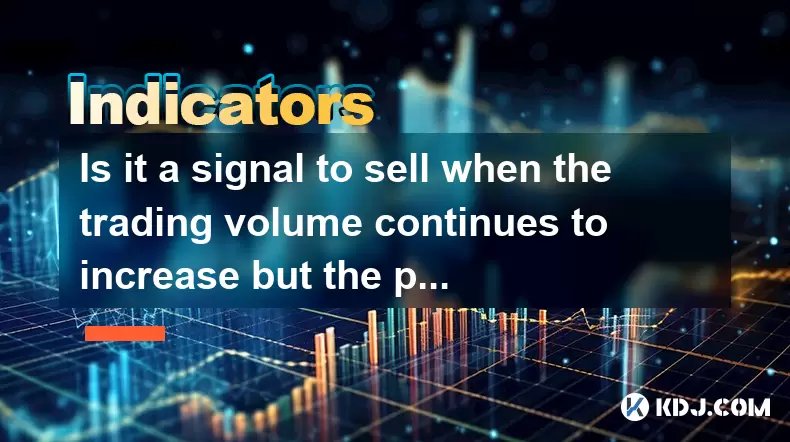
Understanding the Relationship Between Trading Volume and Price
In the cryptocurrency market, trading volume and price movement are two of the most closely monitored indicators by traders and analysts. Volume reflects the total number of coins or tokens traded over a specific period, serving as a measure of market activity. When volume increases significantly while the price remains flat or shows minimal movement, it may indicate a shift in market sentiment. This phenomenon is often interpreted as a potential distribution phase, where large holders or institutions are selling their holdings while retail buyers absorb the supply without pushing the price higher.
A rising volume with stagnant price suggests that although there is intense trading activity, upward price pressure is absent. This imbalance can signal that selling pressure is being matched by buying interest, preventing price appreciation. In technical analysis, this pattern is sometimes referred to as a "bull trap" if it occurs after a strong upward trend, meaning buyers are entering the market under the assumption of continued growth, while sellers are quietly exiting.
Spotting Volume-Price Divergence on Charts
To identify this scenario, traders typically use candlestick charts combined with a volume indicator, usually displayed at the bottom of the chart. When analyzing such divergence:
- Observe a sustained increase in daily or hourly trading volume across multiple sessions.
- Confirm that the price is moving sideways within a narrow range, showing no clear breakout.
- Look for long upper and lower wicks on candles, indicating volatility within the session but no closing momentum.
- Check for declining Relative Strength Index (RSI) despite high volume, which may suggest weakening bullish momentum.
For example, on platforms like TradingView or Binance, you can overlay the volume histogram and compare its trend with the price action. If volume bars are consistently higher than the 20-day average while the price hovers around the same level, this strengthens the case for divergence. This visual confirmation is critical before making any trading decisions.
Interpreting Market Psychology Behind the Pattern
The psychology behind increasing volume with stagnant price often reflects a power struggle between buyers and sellers. During a prolonged uptrend, early investors or whales may choose to take profits by selling large quantities. These sales increase volume but are met by eager buyers, often retail traders, who believe the trend will continue. As a result, the price doesn't drop sharply, but it also fails to rise.
This environment creates a hidden distribution scenario. The smart money is exiting, while the broader market remains optimistic. Indicators such as on-chain data from platforms like Glassnode can support this interpretation. For instance, a spike in exchange inflows combined with rising volume and flat price may confirm that large holders are moving assets to exchanges—typically a precursor to selling.
How to Use On-Chain and Exchange Data to Confirm the Signal
To validate whether rising volume with stagnant price is a sell signal, supplement chart analysis with on-chain metrics:
- Monitor exchange inflows using tools like CryptoQuant. A surge in coins moving to exchanges, especially from long-term holders, increases the likelihood of selling.
- Check the supply distribution across wallets. If the number of large wallets (e.g., holding over 1,000 BTC) is decreasing, it may indicate whale activity.
- Analyze net position change on futures markets. If long positions are increasing while price is flat, it suggests overconfidence among leveraged traders, which can lead to liquidation cascades if the price drops.
- Review stablecoin supply ratio (SSR). A rising SSR means fewer coins are being bought with stablecoins, indicating weakening demand despite high volume.
These data points help distinguish between organic consolidation and active distribution. When multiple indicators align—high volume, flat price, rising exchange reserves, and declining holder confidence—the case for a sell signal strengthens.
Practical Steps to Respond to This Market Condition
If you observe this pattern in a cryptocurrency you hold, consider the following actions:
- Reduce position size gradually instead of exiting entirely. This minimizes risk while preserving upside if the price eventually breaks out.
- Set a trailing stop-loss just below key support levels to protect gains without premature exit.
- Avoid adding to your position unless there is a confirmed breakout above resistance with sustained volume.
- Shift a portion of holdings into stablecoins or less volatile assets to preserve capital.
- Monitor order book depth. Thin order books on the buy side despite high volume may indicate lack of real demand.
For example, if you're holding Ethereum and notice volume doubling over five days while the price stays within a $3,100–$3,150 range, check if large transfers to exchanges like Binance or Coinbase have increased. If yes, it supports profit-taking behavior. Use this information to adjust your strategy accordingly.
Common Misinterpretations and How to Avoid Them
Not every instance of high volume and flat price leads to a downturn. Sometimes, the market is undergoing accumulation rather than distribution. In accumulation, smart money buys quietly while the price remains stable, absorbing sell orders. Key differences include:
- Volume spikes occur on downward moves, not upward or sideways ones.
- Candlestick patterns show strong wicks to the downside, indicating rejected lows.
- On-chain data shows coins moving off exchanges into private wallets.
- Social sentiment is pessimistic, contrary to the optimism seen in distribution phases.
To avoid false signals, never rely on volume and price alone. Combine technical, on-chain, and sentiment analysis for a holistic view. A single indicator can mislead, but converging evidence across data types increases accuracy.
Frequently Asked Questions
Can high volume with flat price ever be a bullish signal?
Yes, during accumulation phases, institutional investors may absorb sell pressure without pushing the price up. If on-chain data shows coins moving to cold wallets and exchange reserves are declining, it could indicate accumulation. Additionally, tight price ranges with high volume may precede a breakout if followed by a surge in buying volume.
How long should the volume remain elevated before it's considered significant?
There is no fixed duration, but sustained volume above the 30-day average for at least 3–5 consecutive days is typically meaningful. Short spikes due to news or liquidations are less reliable. Consistency in elevated volume increases the validity of the signal.
Does this pattern apply to all cryptocurrencies equally?
No, low-cap altcoins are more prone to manipulation, where volume can be artificially inflated. In contrast, large-cap assets like Bitcoin or Ethereum exhibit more reliable volume-price relationships due to deeper liquidity and broader participation. Always consider market cap and liquidity when interpreting this pattern.
Should I sell immediately when I see this pattern?
Immediate selling is not always necessary. Use the signal as a warning to reassess your position. Consider partial profit-taking, tightening stop-losses, or hedging with derivatives. Combine the observation with other indicators before executing any trade.
Disclaimer:info@kdj.com
The information provided is not trading advice. kdj.com does not assume any responsibility for any investments made based on the information provided in this article. Cryptocurrencies are highly volatile and it is highly recommended that you invest with caution after thorough research!
If you believe that the content used on this website infringes your copyright, please contact us immediately (info@kdj.com) and we will delete it promptly.
- LYNO Token Presale: AI Arbitrage Revolution in DeFi
- 2025-07-31 05:11:11
- Pepecoin Successors: Can These Cryptocurrencies Make You a Millionaire?
- 2025-07-31 05:50:12
- AML Bitcoin Fraud: Cracking Down on Crypto Crime in the Big Apple and Beyond
- 2025-07-31 04:33:53
- Cardano (ADA) in 2025: Navigating Crypto's Future
- 2025-07-31 03:52:07
- Solana Meme Coin Price Prediction: Will the Frog Outleap the Dog?
- 2025-07-31 03:52:07
- Bitcoin's Bullish Outlook: CryptoQuant's Insights on Futures Market Cooling
- 2025-07-31 03:59:10
Related knowledge

How to identify sell signals with the AVL indicator?
Jul 31,2025 at 07:09am
Understanding the AVL Indicator and Its Core ComponentsThe AVL indicator, also known as the Accumulation Volume Line, is a volume-based technical anal...

How does the VWAP line help in identifying overbought and oversold market conditions?
Jul 31,2025 at 05:19am
Understanding the VWAP Line and Its Role in Technical AnalysisThe Volume Weighted Average Price (VWAP) is a critical tool used by traders within the c...
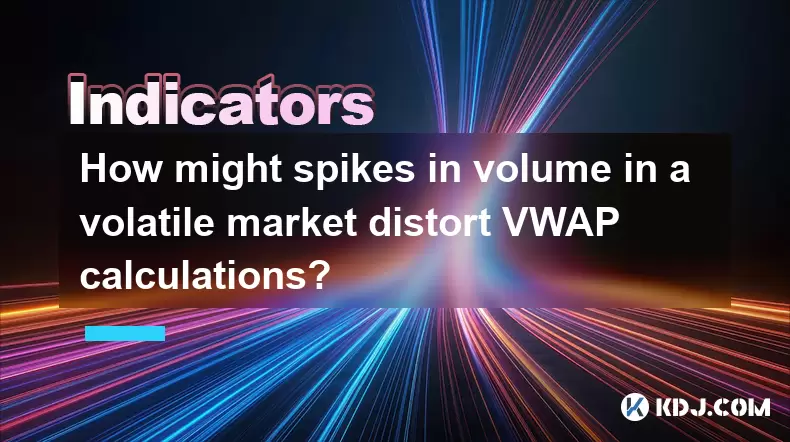
How might spikes in volume in a volatile market distort VWAP calculations?
Jul 31,2025 at 07:40am
Understanding VWAP and Its Core ComponentsVWAP, or Volume-Weighted Average Price, is a trading benchmark that gives the average price a cryptocurrency...
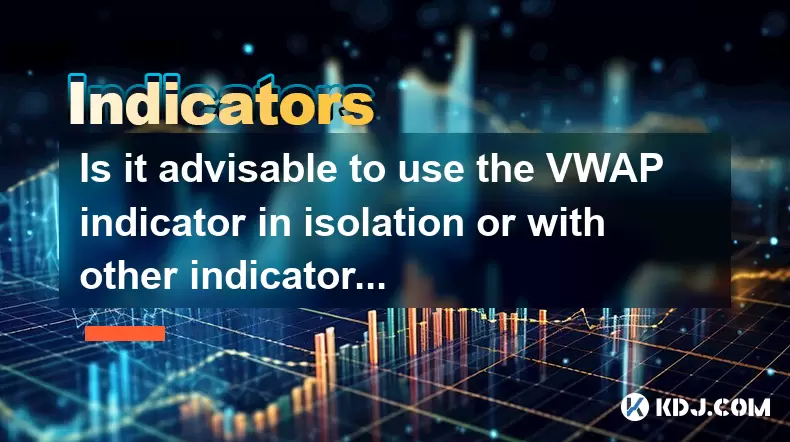
Is it advisable to use the VWAP indicator in isolation or with other indicators?
Jul 31,2025 at 06:48am
Understanding the VWAP Indicator and Its Core FunctionalityThe Volume Weighted Average Price (VWAP) is a widely used technical analysis tool in the cr...
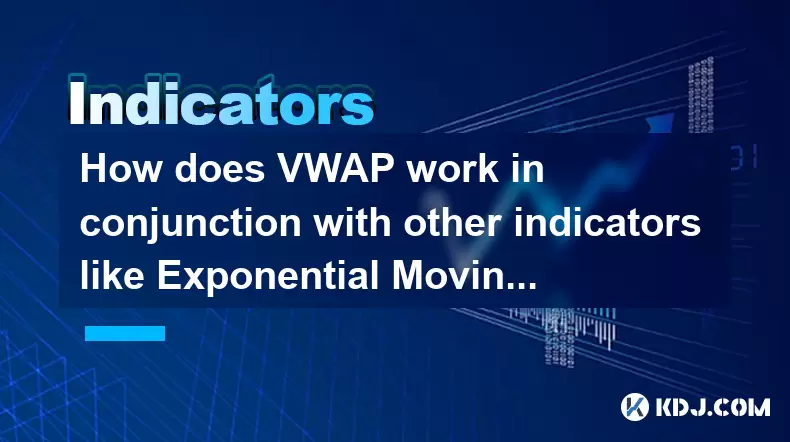
How does VWAP work in conjunction with other indicators like Exponential Moving Averages (EMAs)?
Jul 31,2025 at 04:38am
Understanding VWAP and Its Role in Crypto TradingThe Volume Weighted Average Price (VWAP) is a critical analytical tool in cryptocurrency trading, par...
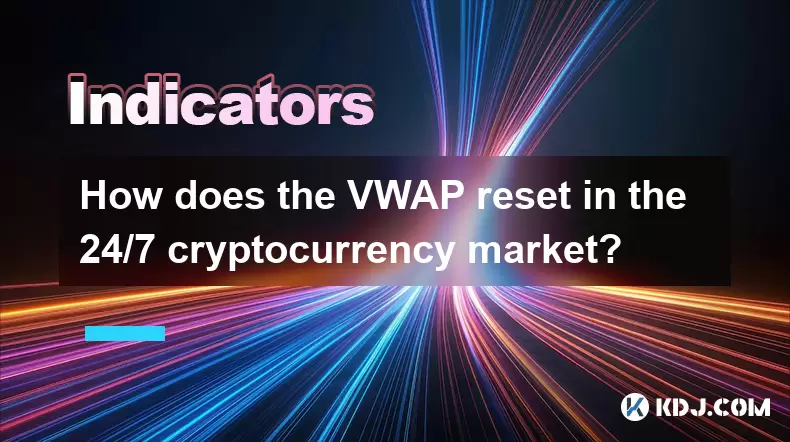
How does the VWAP reset in the 24/7 cryptocurrency market?
Jul 31,2025 at 06:38am
Understanding VWAP in Cryptocurrency MarketsThe Volume Weighted Average Price (VWAP) is a trading benchmark that calculates the average price of an as...

How to identify sell signals with the AVL indicator?
Jul 31,2025 at 07:09am
Understanding the AVL Indicator and Its Core ComponentsThe AVL indicator, also known as the Accumulation Volume Line, is a volume-based technical anal...

How does the VWAP line help in identifying overbought and oversold market conditions?
Jul 31,2025 at 05:19am
Understanding the VWAP Line and Its Role in Technical AnalysisThe Volume Weighted Average Price (VWAP) is a critical tool used by traders within the c...

How might spikes in volume in a volatile market distort VWAP calculations?
Jul 31,2025 at 07:40am
Understanding VWAP and Its Core ComponentsVWAP, or Volume-Weighted Average Price, is a trading benchmark that gives the average price a cryptocurrency...

Is it advisable to use the VWAP indicator in isolation or with other indicators?
Jul 31,2025 at 06:48am
Understanding the VWAP Indicator and Its Core FunctionalityThe Volume Weighted Average Price (VWAP) is a widely used technical analysis tool in the cr...

How does VWAP work in conjunction with other indicators like Exponential Moving Averages (EMAs)?
Jul 31,2025 at 04:38am
Understanding VWAP and Its Role in Crypto TradingThe Volume Weighted Average Price (VWAP) is a critical analytical tool in cryptocurrency trading, par...

How does the VWAP reset in the 24/7 cryptocurrency market?
Jul 31,2025 at 06:38am
Understanding VWAP in Cryptocurrency MarketsThe Volume Weighted Average Price (VWAP) is a trading benchmark that calculates the average price of an as...
See all articles

























































































